It resembles every other park in the neighbourhood of Vedado. There’s a statue or two, benches strategically scattered under mature trees, and local residents enjoying the outdoors. So what makes Havana’s Parque John Lennon special?
Read a few reviews at TripAdvisor, and Parque John Lennon might never make it to your travel list.
If so, that would be unfortunate. It’s not only just “another statue,” but there’s so much more to what makes Havana’s Parque John Lennon special. In fact, I can think of five compelling reasons to spend time in this Havana haven.
1. A statue that warrants its own security guard
On an ornate bench near the southeast corner of the park at 17th and 6th Streets sits a statue of John Lennon. The bench rests on a large marble slab with the inscription Dirás que soy un soñador pero no soy el único John Lennon. It’s a translation of “You may say I’m a dreamer, but I’m not the only one,” from the song, ‘Imagine.’
Nearby stands a security guard. His job is to guard the circular-rimmed glasses that were a recognizable signature of Lennon’s period of political activism. They’re not the original glasses. Those are long gone, along with subsequent replacements, stolen by souvenir seekers since the statue was unveiled in 2000.
The guardian of the glasses has one of the world’s unique jobs. Imagine.
It’s one of the things that makes Parque John Lennon special.
2. A statue that symbolizes change
Once banned, now revered.
Despite Fidel Castro’s nationwide ban of Beatles’ music in 1964, young Cubans clandestinely listened to tapes of smuggled copies that found their way to the island.
Why the ban? The music was considered a crass example of the mindless consumerism of Beatlemania. Lasting until 1966, the ban was designed to eliminate Western influences that undermined a revolutionary ethic of hard work and sacrifice. These were considered key to overcoming Cuba’s underdevelopment.
Fast-forward to December 8, 2000, the 20th anniversary of Lennon’s death. With renditions of Lennon classics playing in the background, Castro personally unveiled the statue. In his tribute to the former Beatle, Castro remarked, “What makes him great in my eyes is his thinking, his ideas. I share his dreams completely.”
What triggered the change? Lennon’s political dissidence, vocal opposition of US foreign policy, and advocacy for the working class endeared him to Castro. In 1969, the year Lennon gave the world the anthem ‘Give Peace a Chance,’ he returned his MBE (Member of the Order of the British Empire) to Queen Elizabeth II. This was to protest Britain’s support of US involvement in the war in Vietnam. As a US resident, he became the object of FBI surveillance, and a four-year campaign to deport him from the United States.
All this affected how he was perceived in Cuba. He was seen as a victim of US oppression. This, along with his activism, earned him revolutionary status.
From Lima to Liverpool to Los Angeles, there are hundreds of statues and memorials to John Lennon. Each one is special in its own right. The Havana statue is a reminder of a time and place where politics and culture once collided. The unveiling of the statue and renaming of the park marked a turning point in Cuba’s cultural revolution. For the Cuban government, it was an opportunity to pay the highest tribute possible by formally recognizing John Lennon as a ‘true revolutionary.’
The historical context is something that makes Parque John Lennon special.
3. It’s on the classic car tour circuit
The life-sized statue of Lennon strikes a relaxed pose at the end of the bench. There’s enough space for one or two adoring fans to share an intimate moment with John. It’s a photo op worthy of sharing on Facebook or Instagram.
This makes it a popular stop on the classic car circuit. Brightly painted American classics pull up beside the park. They’re mostly 1950s convertibles charging $35 an hour. Watching the cars disgorge tourists is part of the appeal. It’s interesting to observe the drivers carefully open and close doors like they’d handle the bedroom door of a sleeping loved one.
Classic Cuban cars are part of the national identity. They’re a remnant of the 1959 revolution, and the US embargo spanning 60 years. They symbolize Cuban ingenuity and resourcefulness, forces that have kept these old relics on the road.
They’re reminders of the importance of tourism to the Cuban economy where the average monthly income is 30 USD. On full-time tourist duty, a classic car can earn that in an hour by including stops such as Parque John Lennon. A car is a means for ordinary Cubans to make a better living and improve their lives.
The classic cars that ferry tourists around Havana, and bring them to Parque John Lennon, help make it a special place.
4. It’s in Vedado
Parque John Lennon is in the heart of Vedado, a sprawling residential neighbourhood to the east of Habana Vieja (Old Havana). Its tree-lined streets and residential gardens are a refreshing contrast to the compact and crowded Habana Vieja and Centro Habana.
With its sumptuous mansions and striking façades, Vedado boasts some of the best early- and mid-twentieth-century architecture in Cuba. Parts of the neighbourhood, especially the area around Parque John Lennon, exude an aura of pre-revolutionary elegance.
I loved wandering Vedado’s grid of shady streets punctuated with green areas such as Parque John Lennon. With its eclectic mix of architecture spanning a century of development, decay, and restoration, every block has a one-of-a-kind building worthy of pausing for quiet reflection.
It would be interesting to know more about these decaying beauties. Who once lived there? Who lives there now? Why is one floor restored, and others left to crumble? I couldn’t find a tour. If one existed, I would have signed up in a heartbeat.
The grand buildings within walking distance of Parque John Lennon make it a special place.
5. It’s a beautiful statue
Spend a few moments on that bench beside John Lennon, admiring the fine lines and intricate details. Imagine how many hands it took to alter the patina of John Lennon’s knee, shoulder, and left hand. You might wonder if the smooth surfaces were intentional, an invitation to devoted fans to share moments of intimacy through touch.
The talent of the sculptor is inescapable.
If you’ve already spent time in Old Havana, the sculpture might feel familiar. That’s because other life-sized works of renowned artist José Ramón Villa Soberón grace public spaces.
The most notable is the one of Ernest Hemingway in La Floridita, a favourite hangout of the author.
Whether in search of the bar or the sculpture, the Floridita is a popular drop-in spot for visitors. Hanging above the bar is a signed plaque, “My mojito in the Bodeguita del Medio and my daiquiri in the Floridita.” As a cocktail connoisseur, Hemingway believed the frozen rum daiquiris at La Floridita were the best in the world. Why not stop in and order one? La Floridita is on the corner of Monserrate and Calle Obispo.
Another is the sculpture of a local vagabond dubbed the ‘Gentleman from Paris’ (El Caballero de Paris). It’s outside the Basilica Menor de San Francisco de Asis. Visitors stroke his straggly beard and pointed finger for good luck.
Visit these works of José Ramón Villa Soberón. And of course, visit Parque John Lennon. It’s more than just “another statue.”
If you’re planning a visit to Cuba, you might be interested in:

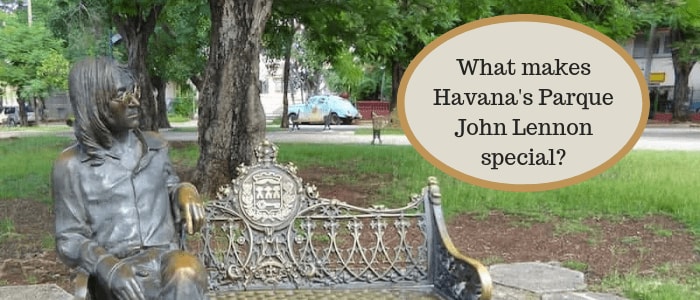

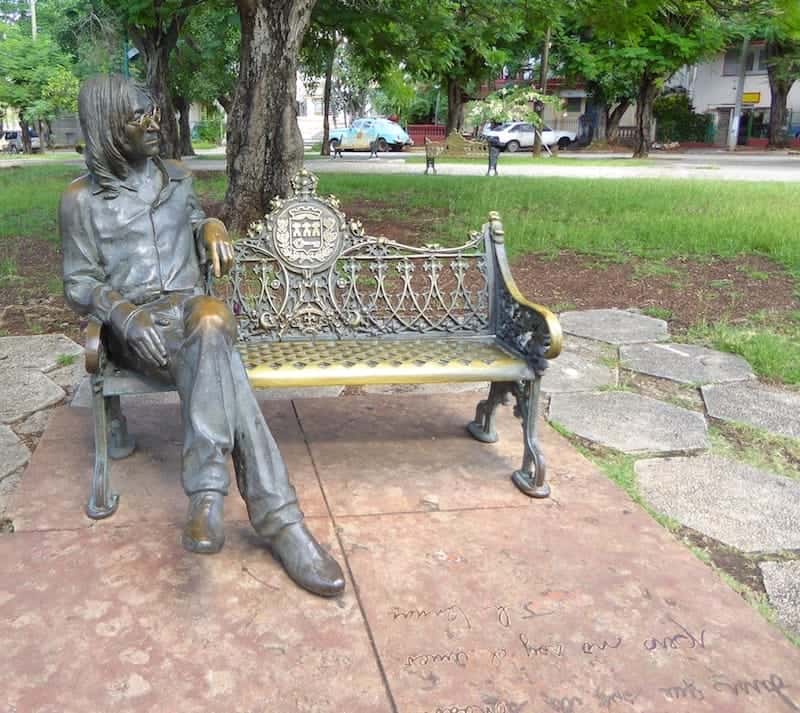
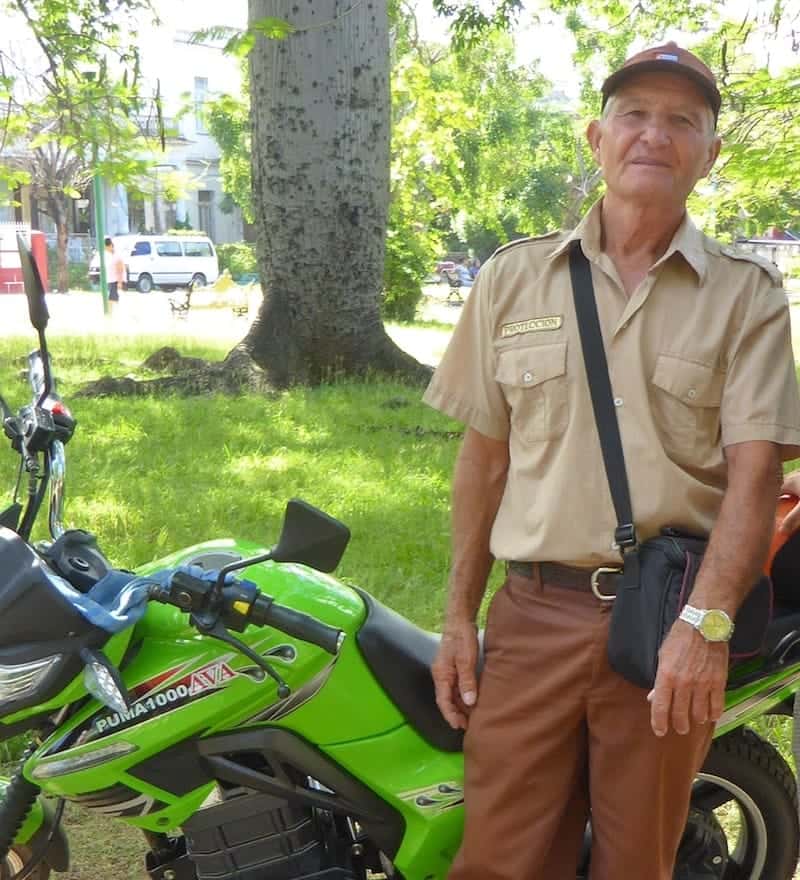
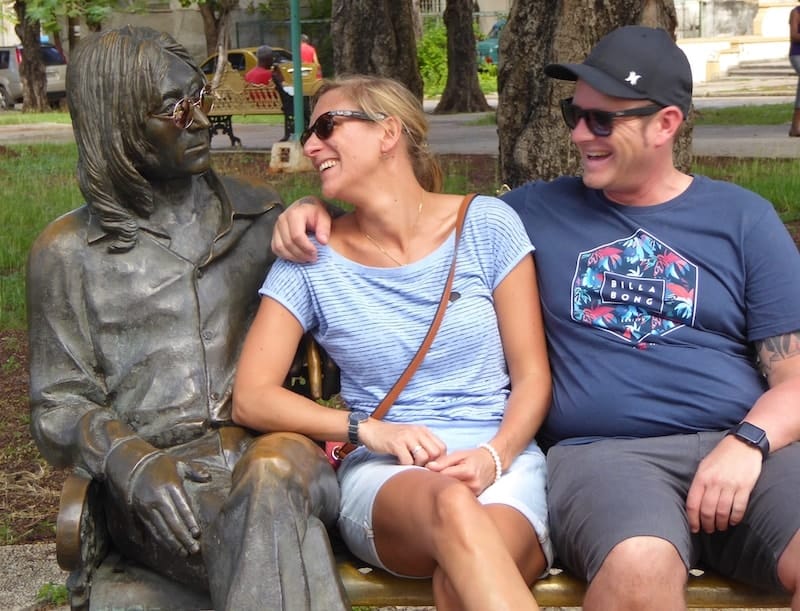
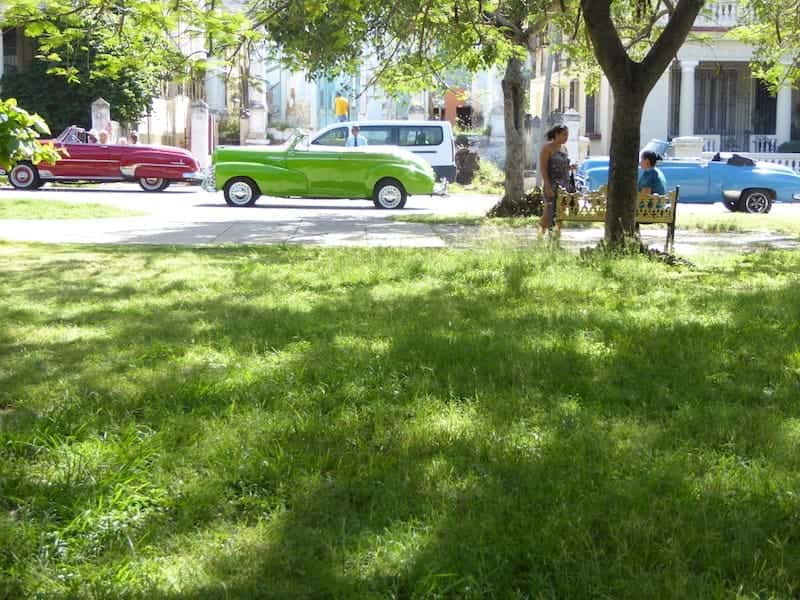
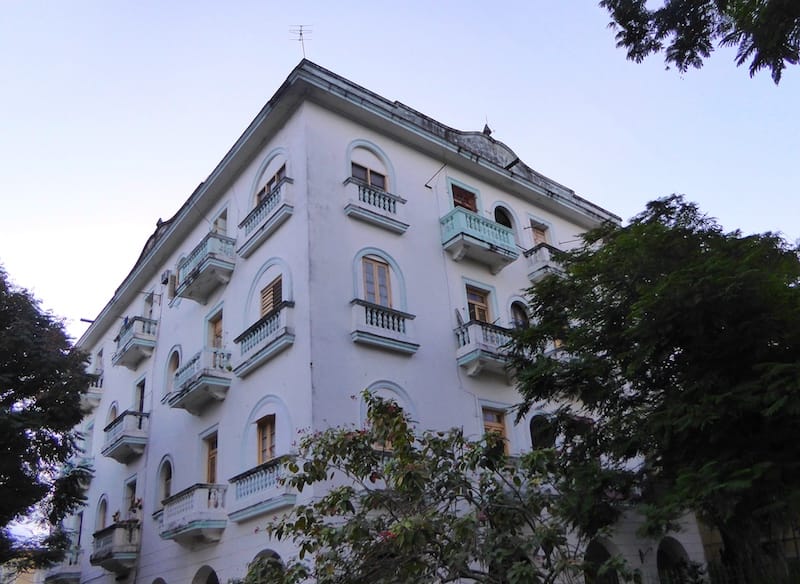
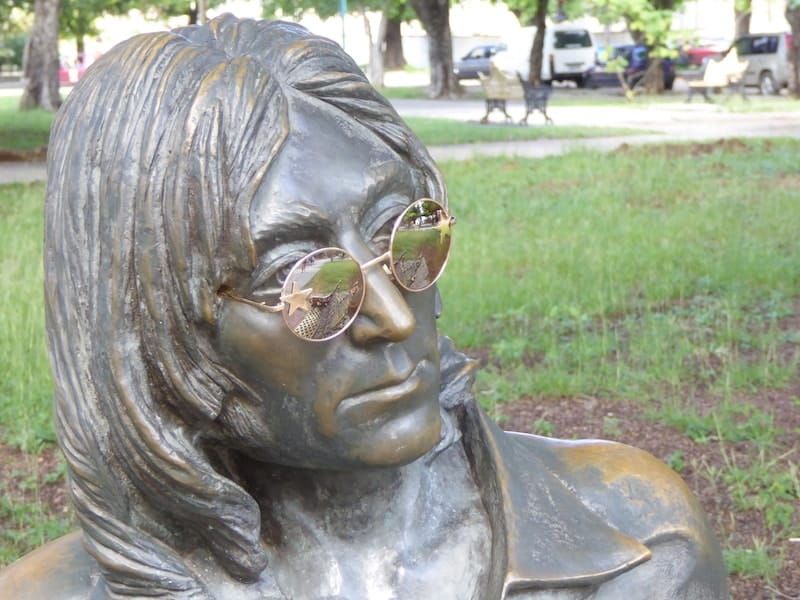
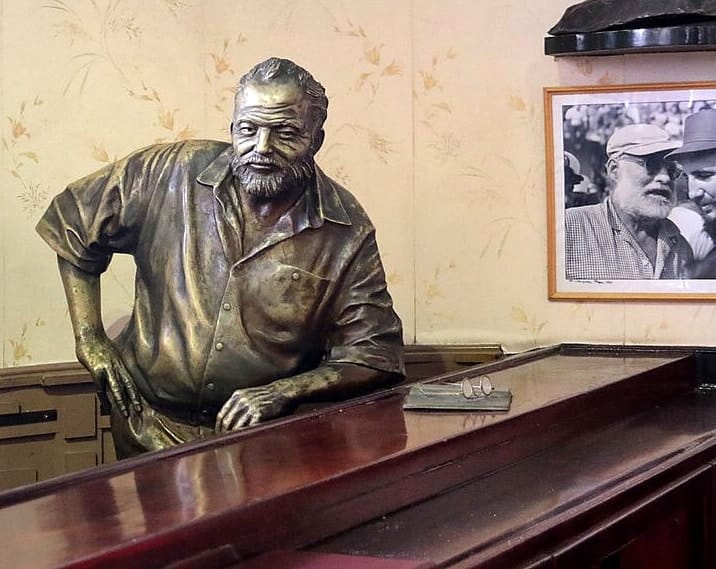
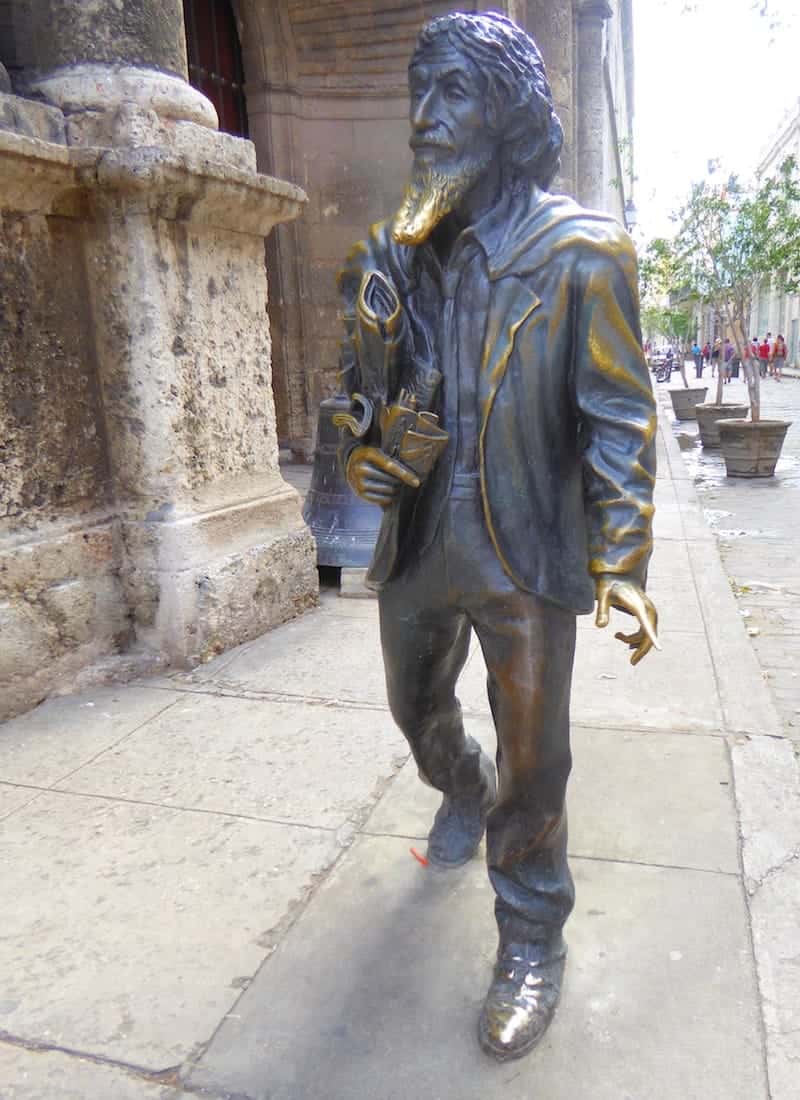




This is a great story Anne. I am headed to Cuba this Xmas and we are planning a trip to Havana. I am really excited about seeing the Parc John Lennon and exploring the Vedado. I am also really excited about being able to see the vintage cars.
Thanks for this very timely post (for me … lol).